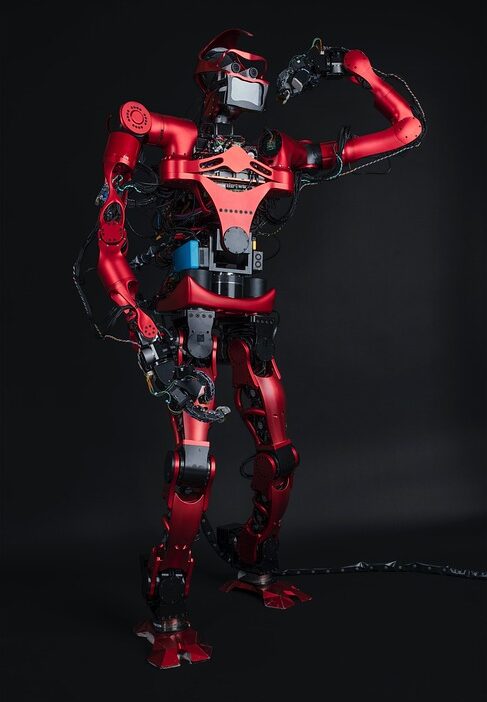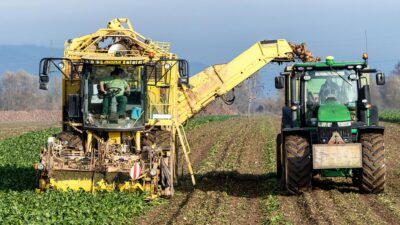As we march further into the 21st century, one of the most significant drivers of change across various sectors is the rapid advancement of robotics. Once confined to the realms of science fiction and manufacturing assembly lines, robots are now seamlessly integrated into a plethora of industries, reshaping the way we work, live, and interact. This article explores how robotics is transforming industries and paving the way for a revolution of tomorrow.
A New Era in Manufacturing
Robotics has long been a cornerstone of the manufacturing sector, enhancing productivity and efficiency. With the advent of artificial intelligence (AI) and machine learning, modern robots can perform complex tasks with precision and adaptability. Collaborative robots, or cobots, work alongside human operators, taking on repetitive, dangerous, or ergonomically challenging tasks. This collaboration not only optimizes production lines but also improves worker safety and job satisfaction.
Consider automotive manufacturing: robots can weld, paint, and assemble cars at an unmatched speed. Companies like Tesla and Ford are using robotic systems to streamline operations and maintain high standards of quality, drastically reducing production times and costs.
Revolutionizing Healthcare
In healthcare, robotics is transforming patient care and treatment delivery. Surgical robots, such as the da Vinci Surgical System, offer minimally invasive procedures with enhanced precision, leading to shorter recovery times and reduced hospital stays. Telepresence robots are enabling remote consultations, breaking geographical barriers and providing access to specialist care for patients in rural or underserved areas.
Moreover, robots are increasingly assisting with rehabilitation, using adaptive algorithms to promote tailored patient care. This technology not only enhances patient outcomes but also relieves some of the burdens from healthcare professionals, allowing them to focus on complex decision-making and personalized care.
Innovating Agriculture
The agricultural sector is also undergoing a profound transformation with the integration of robotics. Autonomous tractors, drones, and robotic harvesters are revolutionizing farming practices. By utilizing AI and machine learning, these robots can analyze soil quality, monitor crop health, and precisely apply fertilizers or pesticides, leading to increased yields and reduced environmental footprint.
For example, companies like Blue River Technology are developing robots that can distinguish between weeds and crops, allowing for targeted herbicide application. This not only promotes sustainable practices but also helps farmers minimize costs and improve their profitability.
Streamlining Logistics and Supply Chain
Robotic automation is a game-changer in logistics and supply chain management. With the rise of e-commerce, there is an ever-increasing demand for faster delivery times and efficient inventory management. Automated guided vehicles (AGVs) and robotic arms in warehouses ensure that goods are stored and retrieved with minimal human intervention, speeding up the fulfillment process.
Amazon, for instance, employs a fleet of Kiva robots to assist in their fulfillment warehouses, helping them manage massive volumes of inventory while optimizing space. This level of automation is critical as businesses strive to meet the growing demand for quick and accurate order deliveries.
Enhancing Customer Experience
The integration of robotics into customer service is yet another area witnessing remarkable transformation. Chatbots and virtual assistants powered by AI are reshaping how customers interact with brands, providing immediate responses to inquiries and personalized recommendations based on previous interactions. Physical robots, such as those found in hospitality and retail, are improving customer experiences by offering assistance, information, and even entertainment.
For instance, the Aloft Hotel in California employs a robotic butler named “Botlr” to deliver items to guests’ rooms, blending technology with customer service in an innovative way. This not only enhances guest satisfaction but also showcases the potential for robotics to redefine traditional customer-service roles.
Bridging the Skills Gap
As robotics continue to permeate various sectors, there’s an increasing emphasis on the need for a workforce skilled in robotics and automation technologies. Educational institutions and training programs are adapting to this demand, providing courses in robotics, AI, and data analysis.
The shift toward automation presents an opportunity rather than a threat. While certain jobs may be displaced, new roles are emerging in robot maintenance, programming, and oversight, prompting a reevaluation of skills and career pathways.
Conclusion
The future is undoubtedly bright for industries embracing robotics. From manufacturing and healthcare to agriculture and logistics, innovation is the driving force behind improved efficiency, safety, and customer satisfaction. As we stand on the cusp of this technological revolution, embracing robotics not only transforms industries today but lays the groundwork for a more efficient, sustainable, and prosperous tomorrow.
In this exciting landscape, the synergy between humans and machines will define the future of work, encouraging a generation of learners to adapt, grow, and thrive in a world where robotics play an integral role in shaping our daily lives.



